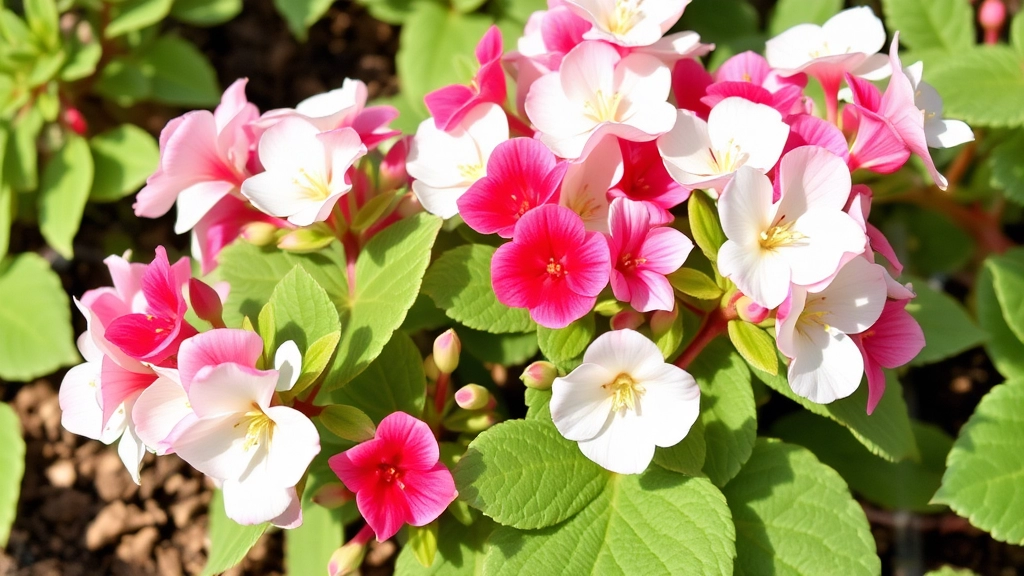Identifying and Treating Powdery Mildew on Kalanchoe
Have you noticed a white powdery substance on your Kalanchoe plants? This is likely powdery mildew, a common fungal disease that can quickly spread if not managed properly. Identifying and treating powdery mildew is crucial to maintaining the health of your Kalanchoe. Let’s dive into how you can spot this issue and the best methods to prevent and treat it.
Signs of Powdery Mildew
Powdery mildew appears as white, powder-like spots on the leaves, stems, and flowers of your Kalanchoe. It thrives in warm, dry conditions with poor air circulation.
Prevention Methods
- Ensure your plants have good airflow
- Avoid overcrowding
Treatment Options
If you already see signs of powdery mildew, natural remedies like neem oil or baking soda solutions can help. For severe cases, chemical fungicides might be necessary. Regular pruning and proper care can also keep your Kalanchoe healthy and free from this pesky fungus.
Identifying Powdery Mildew on Kalanchoe Plants
Have you noticed a white, powdery substance forming on your Kalanchoe plants?
This could be the telltale sign of powdery mildew, a common fungal disease that can affect various plants, including Kalanchoe.
Recognising the symptoms early is crucial for effective treatment and prevention.
Key Symptoms to Look For:
- White Powdery Coating: The most obvious sign is a white, powdery layer on the leaves, stems, and even flowers.
- Yellowing Leaves: Infected leaves may start to yellow and eventually drop off.
- Stunted Growth: The overall growth of the plant may slow down, impacting its health and vitality.
- Distorted Leaves: Leaves may become curled or distorted due to the fungal infection.
If you observe these symptoms, it’s essential to act quickly.
Ignoring the issue can lead to further infestation and damage to your plant. For more detailed guidance on maintaining your plant’s health, check out our Kalanchoe Flapjack Care Tips.
Identifying powdery mildew early gives you a better chance of saving your Kalanchoe and restoring its health. For additional advice on preventing common issues, visit our Kalanchoe Leaf Problem Solutions.
Causes of White Powder Formation on Kalanchoe
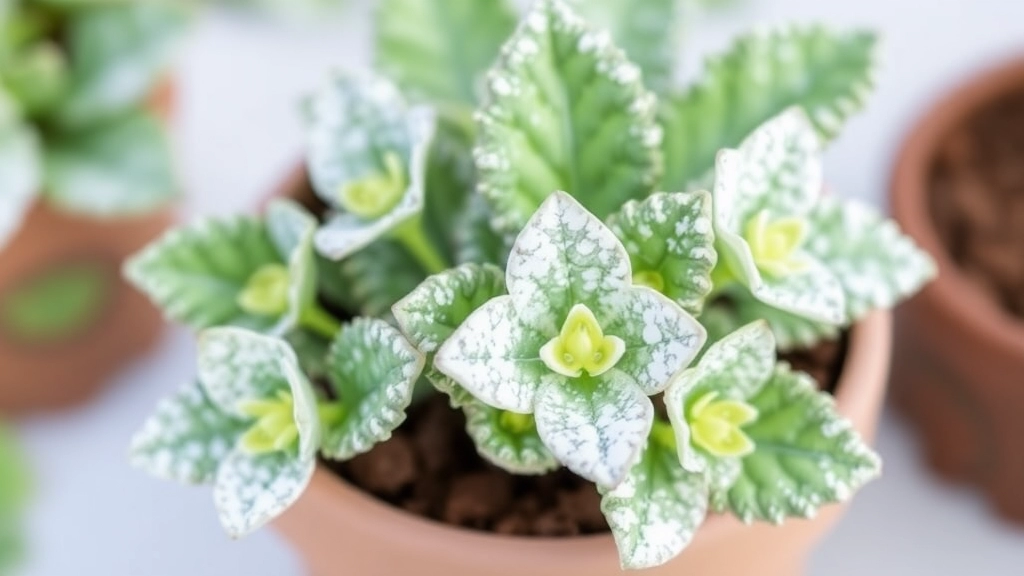
Have you ever noticed that unsettling white powder on your Kalanchoe plants? It can be quite alarming, right? This white powder is often a sign of powdery mildew, a fungal infection that can wreak havoc on your beloved plants.
So, what causes this pesky powder to form? Let’s break it down:
- Fungal Spores: Powdery mildew is caused by various fungal species, such as Erysiphe and Podosphaera. These spores thrive in specific conditions and can easily spread from one plant to another.
- Humidity: High humidity levels are a breeding ground for these fungi. If your Kalanchoe is in a spot that gets too muggy, you’re inviting trouble.
- Poor Air Circulation: If your plant is crammed in a corner or surrounded by other foliage, airflow is restricted. This stagnant air creates the perfect environment for mildew to flourish.
- Overwatering: Too much moisture on the leaves can lead to fungal growth. Kalanchoe prefers well-draining soil, so keep an eye on your watering habits.
- Lack of Sunlight: These plants love the sun! Insufficient light can weaken them, making them more susceptible to infections.
Understanding these causes can help you take proactive steps to protect your Kalanchoe.
Environmental Factors Contributing to Powdery Mildew
Have you ever noticed that your Kalanchoe plants seem to be struggling with white powdery spots?
Understanding the environmental factors that contribute to powdery mildew can help you take proactive steps to protect your plants.
Key Environmental Factors:
- Humidity Levels: High humidity can create the perfect breeding ground for powdery mildew.
- Aim for humidity levels between 40-60%.
- Temperature Fluctuations: Powdery mildew thrives in warm conditions, particularly between 20-25°C (68-77°F).
- Avoid placing your Kalanchoe in areas with sudden temperature changes.
- Poor Air Circulation: Stagnant air can trap moisture around the leaves, encouraging mildew growth.
- Ensure your plants are spaced adequately to allow for airflow.
- Overhead Watering: Watering from above can leave moisture on the leaves, which is an invitation for fungal diseases.
- Water at the base of the plant to keep leaves dry.
- Lighting Conditions: Insufficient light can weaken plants, making them more susceptible to diseases.
- Position your Kalanchoe where they can receive bright, indirect sunlight.
For more detailed care tips, you might find our guide on Kalanchoe tomentosa watering best practices helpful. Additionally, if you’re dealing with leaf issues, check out our article on Kalanchoe leaf problems.
Best Practices for Preventing Powdery Mildew
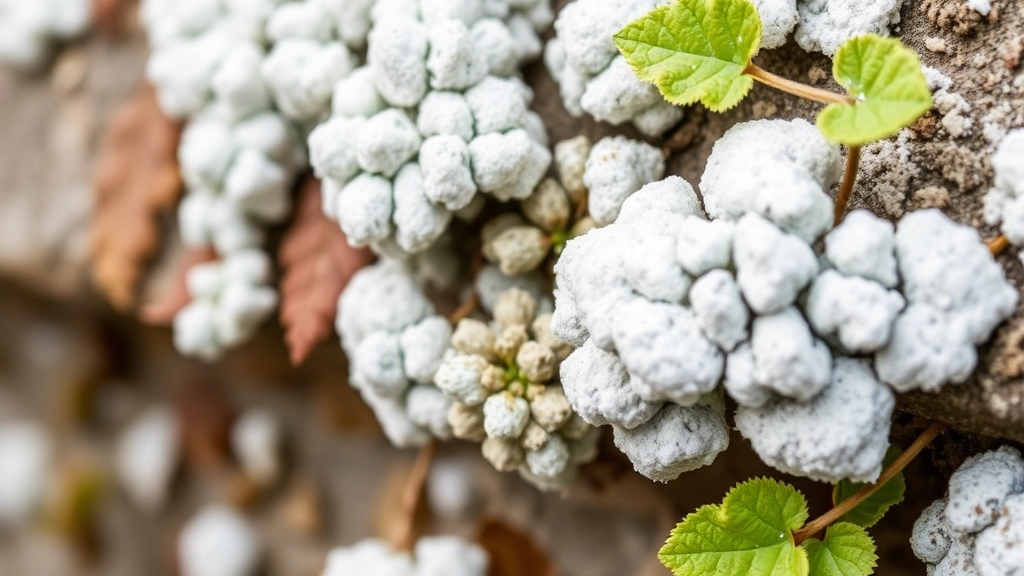
As we delve into prevention strategies, it’s crucial to understand that proactive measures can significantly reduce the risk of powdery mildew on Kalanchoe plants.
Key Prevention Strategies
- Choose Resistant Varieties
Opt for Kalanchoe varieties known for their resistance to powdery mildew. This simple choice can save you time and effort in the long run. - Proper Watering Techniques
Water your plants early in the day to allow excess moisture to evaporate.- Avoid overhead watering; instead, water at the base.
- Ensure the soil is well-draining to prevent water accumulation.
- Maintain Optimal Spacing
Ensure adequate spacing between plants.- This promotes air circulation, reducing humidity levels around the leaves.
- Aim for at least 30 cm between each plant.
- Regular Inspection
Make it a habit to inspect your Kalanchoe plants weekly.- Look for early signs of powdery mildew, such as white spots.
- Early detection can lead to quicker intervention.
- Mulching
Apply a layer of mulch around your plants.- This helps retain soil moisture while preventing soil-borne spores from splashing onto leaves.
- Fertility Management
Over-fertilising can lead to lush foliage, which is more susceptible to mildew.- Use a balanced fertiliser and follow the recommended application rates.
- Environmental Control
Keep your plants in a location with good air circulation and bright, indirect sunlight.- Avoid placing them in overly humid or shaded areas.
Natural Remedies for Powdery Mildew Treatment
Dealing with powdery mildew on Kalanchoe plants can be frustrating, but there are effective natural remedies that can help restore your plants to health.
Common Natural Solutions:
- Baking Soda Spray: Mix 1 tablespoon of baking soda with 1 litre of water and a few drops of dish soap. Spray this solution on the affected leaves. The baking soda helps to create an alkaline environment that discourages mildew growth.
- Neem Oil: This natural fungicide is derived from the seeds of the neem tree. Mix 2 tablespoons of neem oil with 1 litre of water and a few drops of dish soap. Spray this mixture on both the upper and lower leaf surfaces.
- Garlic Spray: Blend 2-3 cloves of garlic with water, strain the mixture, and dilute it with more water. Garlic has antifungal properties that can help combat powdery mildew.
- Milk Solution: Combine equal parts of milk and water. Spray this mixture on your Kalanchoe plants. The beneficial bacteria in milk can help control the growth of mildew.
- Vinegar Solution: Mix 1 part white vinegar with 3 parts water. Apply this solution to the affected areas, but be cautious as vinegar can also damage the plant if used excessively.
Application Tips:
- Always test any solution on a small part of the plant first to ensure there’s no adverse reaction.
- Apply these remedies in the early morning or late afternoon to avoid sunburn on the leaves.
Natural remedies not only help in treating powdery mildew but also promote a healthier growing environment for your Kalanchoe. For more specific care tips, check out our Kalanchoe Beharensis care guide and learn about the causes and solutions for dying Kalanchoe leaves.
Chemical Fungicides to Treat Powdery Mildew
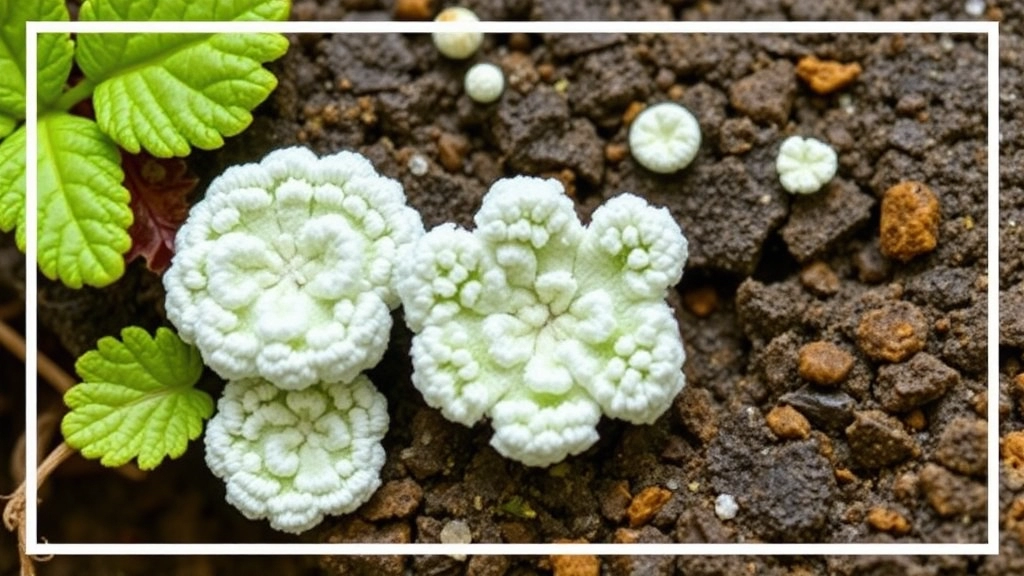
So, you’ve spotted that pesky white powder on your Kalanchoe, and you’re wondering if chemical fungicides are the way to go.
Let’s be real—sometimes, despite our best efforts, we need a little extra help. Chemical fungicides can be effective in tackling powdery mildew, especially when the infection is widespread.
Here’s what you need to know:
- Choose the Right Fungicide: Look for products specifically labelled for powdery mildew. Common ingredients include myclobutanil, triadimefon, and azoxystrobin.
- Follow Instructions: Always read the label carefully. Application rates and timing are crucial for effectiveness.
- Test First: If you’re unsure, test the fungicide on a small part of the plant first. This helps ensure that your Kalanchoe won’t have an adverse reaction.
- Timing is Everything: Apply fungicides in the early morning or late afternoon. This reduces the risk of leaf burn and maximizes absorption.
- Repeat Applications: You may need to apply the fungicide every 7-14 days, especially in humid conditions where mildew thrives.
- Stay Safe: Wear gloves and a mask while applying chemical treatments. Safety first, always!
While chemical solutions can be effective, they should ideally be part of a broader strategy that includes prevention and care.
When faced with the challenge of powdery mildew on your Kalanchoe, you may wonder how to effectively manage and care for your infected plants. Pruning plays a crucial role in this process.
### Assessing the Damage
Start by inspecting your Kalanchoe plants thoroughly.
– **Identify Infected Leaves**: Look for white, powdery spots on the leaves.
– **Check for Other Signs**: Yellowing or wilting can indicate a more severe infection.
Once you’ve identified the affected areas, it’s time to take action.
### Pruning Techniques
Effective pruning can help mitigate the spread of powdery mildew. Here’s how to do it:
– **Use Clean Tools**: Always use sterilised scissors or pruning shears to prevent further contamination.
– **Remove Infected Leaves**: Cut away the leaves that show signs of mildew.
– **Dispose Properly**: Don’t compost infected plant material; instead, dispose of it in a sealed bag to prevent spores from spreading.
### Post-Pruning Care
After pruning, it’s essential to care for your Kalanchoe to support its recovery.
– **Water Wisely**: Ensure you are [watering at the base of the plant](https://planthq.org/optimal-watering-tips-for-healthy-florist-kalanchoe/) to avoid wetting the leaves.
– **Monitor Humidity**: Keep humidity levels in check, as high humidity can exacerbate powdery mildew.
### Encouraging New Growth
Once you’ve dealt with the infected parts, focus on encouraging healthy growth:
– **Fertilise Sparingly**: Use a balanced fertiliser to promote new growth but avoid over-fertilising, which can stress the plant.
– **Observe Regularly**: Keep an eye on your plants for any signs of returning mildew. For more detailed guidance on keeping your Kalanchoe healthy, you might find this [complete guide to Kalanchoe plant care](https://planthq.org/complete-guide-to-kalanchoe-plant-care/) useful.
Enhancing Air Circulation and Light for Kalanchoe Health
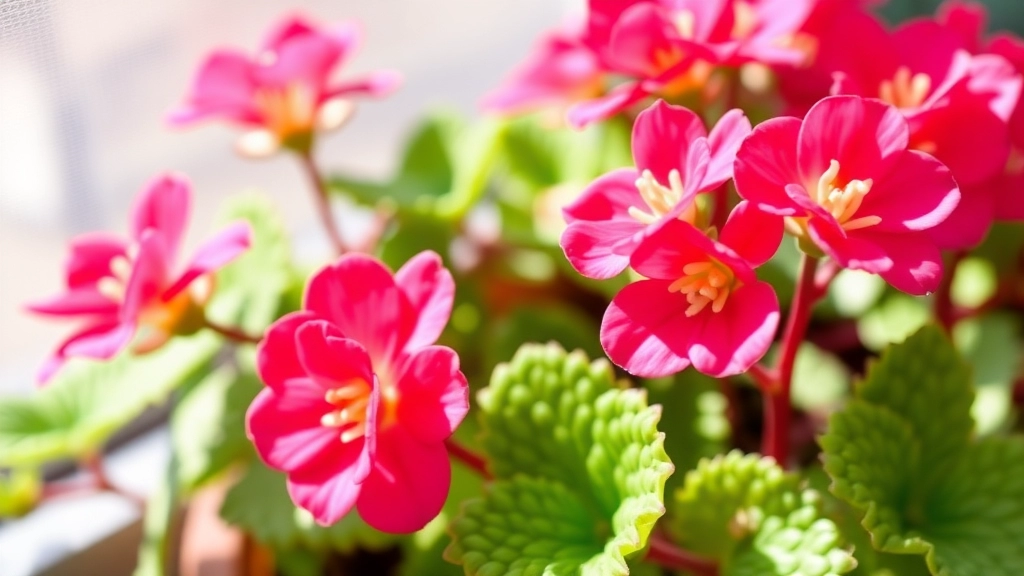
Ever looked at your Kalanchoe and thought, “Why do they look a bit off?”
One major culprit could be poor air circulation and insufficient light.
Why Air Circulation Matters
Good air circulation is crucial for Kalanchoe plants.
When air can flow freely around your plants, it helps to:
- Reduce Humidity: Less humidity means less chance for powdery mildew to thrive.
- Promote Healthy Growth: Plants love fresh air; it helps them breathe and grow stronger.
Tips for Improving Air Circulation
Here are some simple ways to boost airflow around your Kalanchoe:
- Spacing: Give your plants enough space. Don’t overcrowd them. Aim for at least a few inches between each pot.
- Move Them Around: If they’re indoors, consider rotating them to different spots where they can catch a breeze.
- Use Fans: A small fan can do wonders. Just make sure it’s not blowing directly on the plants; gentle air movement is key.
Light Requirements for Kalanchoe
Now, let’s chat about light.
Kalanchoe plants thrive in bright, indirect sunlight.
Too little light can weaken them, making them more susceptible to diseases like powdery mildew.
How to Ensure Your Kalanchoe Gets Enough Light
- Location: Place them near a window that gets plenty of light but avoid direct sunlight, which can scorch their leaves.
- Rotate Regularly: Rotate your plants every couple of weeks to ensure all sides get equal light exposure.
- Supplement with Grow Lights: If natural light is scarce, consider using grow lights to give your Kalanchoe the boost they need.
Long-term Maintenance to Prevent Recurrence
After addressing the immediate concerns of powdery mildew, it’s crucial to focus on long-term maintenance to ensure your Kalanchoe plants remain healthy and resilient.
FAQs on Kalanchoe White Powder
What is the white powder on my Kalanchoe plants?
The white powder on your Kalanchoe is often a sign of powdery mildew, a fungal infection caused by various fungal species such as Erysiphe and Podosphaera.
What causes powdery mildew on Kalanchoe plants?
Powdery mildew on Kalanchoe plants can be caused by several factors including high humidity, poor air circulation, overwatering, and lack of sunlight. These conditions create an environment where fungal spores can thrive.
How can I prevent powdery mildew on my Kalanchoe?
Preventing powdery mildew involves several strategies such as choosing resistant varieties, proper watering techniques, maintaining optimal spacing between plants, regular inspections, mulching, balanced fertilization, and ensuring good air circulation and light.
Are there specific watering techniques to avoid powdery mildew?
Yes, water your Kalanchoe early in the day to allow excess moisture to evaporate. Avoid overhead watering and instead water at the base of the plant. Ensure the soil is well-draining to prevent water accumulation.
What should I do if I already see white powder on my Kalanchoe?
If you notice white powder, you can use chemical fungicides specifically labeled for powdery mildew. Make sure to follow the instructions, test the fungicide on a small part of the plant first, and apply it during the early morning or late afternoon for best results.
How often should I inspect my Kalanchoe for signs of powdery mildew?
It’s a good practice to inspect your Kalanchoe plants weekly for early signs of powdery mildew such as white spots. Early detection can lead to quicker intervention and better management of the infection.
Why is air circulation important for Kalanchoe health?
Good air circulation helps reduce humidity around the plants, making it less likely for powdery mildew to thrive. It also promotes healthy growth by allowing the plants to breathe and grow stronger.
How can I improve air circulation for my Kalanchoe plants?
To improve air circulation, ensure adequate spacing between plants, move them around to different spots if they’re indoors, and consider using a small fan to create gentle air movement.
What are the light requirements for Kalanchoe plants?
Kalanchoe plants thrive in bright, indirect sunlight. Insufficient light can weaken them, making them more susceptible to diseases like powdery mildew.
How can I ensure my Kalanchoe gets enough light?
Place your Kalanchoe near a window that gets plenty of light but avoid direct sunlight. Rotate the plants regularly to ensure all sides get equal light exposure. If natural light is scarce, consider using grow lights to supplement.
References
-
Understanding Powdery Mildew on Kalanchoe
-
Preventing and Treating Powdery Mildew on Houseplants
-
Powdery Mildew: Identification and Control
